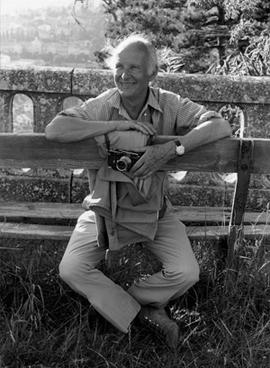“I kept walking the streets, high-strung, and eager to snap scenes of convincing reality, but mainly I wanted to capture the quintessence of the phenomenon in a single image. Photographing, for me, is instant drawing, and the secret is to forget you are carrying a camera. Manufactured or staged photography does not concern me. And if I make a judgement, it can only be on a psychological or sociological level. There are those who take photographs arranged beforehand and those who go out and discover the image and seize it. For me, the camera is a sketchbook, an instrument of intuition and spontaneity, the master of the instant, which in visual terms, questions and decides simultaneously.”
~ Henri Cartier-Bresson
Early Life
On August 22, 1908, Henri Cartier-Bresson was born in Chanteloup-en-Brie, Seine-et-Marne, France. His father was a wealthy textile merchant and his mother’s family were cotton merchants and owned land in Normandy. His father saw him as heir to the family business, but Cartier-Bresson wasn’t interested in being a businessman. After failing the baccalaureate exam three times, at the age of 17, he made is point and received permission to take painting lessons from the French painters Jean Cottenet and Jacques-Émile Blanche.
Cartier-Bresson took to painting but he didn’t take to his parents’ nor his art teacher’s socially conservative leanings. To get away from them, he went abroad to England from 1928 to 1929 to study literature, art, and English at Magdalene College in Cambridge. When he returned to France, he settled in Paris. There he took up with the bohemian crowd and their loose lifestyle and wild parties. He met surrealist painters Salvador Dali and Max Ernst and was fascinated by the juxtaposition of the conscious and the unconscious that was the emphasis of surrealists. He tried to incorporate these principles in his own paintings but was not satisfied with the results and destroyed all his prints. However, his later street photography often reflected the surrealist juxtapositions.
Continue reading “Henri Cartier-Bresson”(169)

